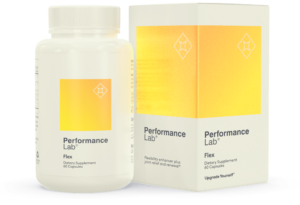Unlike traditional diets that burn a combination of fat and carbohydrates during exercise, fat adaptation helps your body reach a state where it burns fat more efficiently for energy via ketosis, which breaks down fatty acids to form ketones for fuel.
However, it can also occur even when you’re not in a ketogenic state.
And because it enables your body to burn more fat for energy, you may also wonder, during fat adaptation, can you burn fat instead of carbs?
The main benefit of fat adapting is that it helps your body switch to a long-term metabolic state of ketosis, which enables your body to utilize fat for energy as opposed to carbohydrates. So yes. During fat adaptation, you can burn fat instead of carbs.
Why Fat Adaptation?
Research shows that fat adaptation provides many benefits, especially as it relates to sports performance, including:
Reduced body fat/cravings
One study conducted on five seasonal endurance athletes showed that after participating in a ketogenic diet, the participants had a reduction in body fat, which can likely be attributed to the increased feelings of fullness and a reduction in overall food intake that participants reported, resulting in a calorie deficit created by the diet.
The study further explains that the initial reduction in weight can be associated with a loss of body water through glycogen depletion.
Hence, you should expect to lose a lot of water weight when first participating in the diet.
Improved overall well-being
The same study showed that each participant also reported an improvement in overall well-being, improved recovery, and a reduction in inflammation and other conditions.
Increased endurance
Some studies show that fat adaption also increases the body’s ability to oxidize fat during exercise, which helps improve endurance training.
Furthermore, since the body uses fat as fuel instead of carbs, it means the muscles can reserve more glycogen during endurance exercise, thus also helping to expand your endurance capacity.
It provides steady energy
During fat adaptation, your body relies more on fatty acids for energy, which research shows provide a more constant flow of energy than glycogen alone.
Fatty acids also cause little to no spikes in blood sugar, as opposed to sugar, so it won’t cause your body’s blood sugar to rise and fall and thus your level of energy.
Improved mental performance
When carbs are minimized or eliminated, it causes the brain to uses fat-derived ketones for fuel, which studies show creates more ATP and decreases insulin sensitivity and reactive oxidative stress, thus increasing cognitive function, especially in those with cognitive deficits.

Fat Adaptation vs Keto
When your body enters ketosis, such as when on a keto diet or when fasting overnight, it causes your insulin and blood sugar levels to drop, thus causing your liver to make ketones mainly from polyunsaturated, monosaturated, and saturated fatty acids.
From there, ketone bodies are then produced, which are first broken down into acetyl coenzyme A, which is a crucial molecule that aids in various chemical reactions in the cells.
This crucial molecule is then broken down into cellular energy (ATP), which produces ketones.
But after some time, once your body has completely shifted to burning fat as its main fuel source, in other words, it has become fat-adapted, you can also convert fatty acids directly to acetyl coenzyme A to fuel your energy needs.
This is provided you have reached the point where your body can alternate between fat and glucose energy sources based on whichever is needed or available.
During this time, eating carbs will take you out of ketosis; however, once your body has processed the carbs, it will resort back into ketosis.
This differs from keto diets, where the aim is to reach ketosis within the first few weeks, but it does not mean that you are fat-adapted, or able to burn fat as its main source of fuel for the long term.
To put it another way, once you become fat-adapted, carb-loading for a day won’t cause your body to double its production of ketones and blood glucose; however, it will while making the transition to a keto diet.
When you’re transitioning to fat adaptation, you still need to discipline yourself to adhere to a keto diet for at least the first two to three weeks to benefit the most from ketosis.
Can You Eat More Carbs When You are Fat-Adapted?
Because to be fat-adapted means that your body is efficient at burning body fat or dietary fat for energy, it can also burn carbs (glucose) when it’s available or necessary.
Therefore, you can still enjoy more carbs from time to time and quickly begin burning fat as a major fuel source again once your blood sugar and insulin levels return to normal.
How Long Does it Take Your Body to Start Burning Fat Instead of Carbs?
How long it takes your body to become fat-adapted depends on various factors, including how strictly you stick to the keto diet, your genes, your dietary choices, and more.
However, on average, most people enter a fat-adapted state about 4 to 12 weeks after entering ketosis. Endurance athletes, on the other hand, may enter the state a bit sooner.
How Do I Start the Process to Become Fat-Adapted?
Consume a low carb diet
Restricting your carb intake keeps your glucose and insulin levels low, which enables your liver to start burning fat and making ketones.
As a general rule, you should aim for no more than 50 to 100 grams of carbs per day, but try to avoid refined sugar because it can hinder the fat-burning process.
In the meantime, the more active you are, the more carbs you can consume and stay fat- adapted and vice versa.
Up your fat intake
As you consume fewer carbs, you’ll want to up your fat intake to help train your cells to utilize fat for energy.
Dietary fat also doesn’t affect your insulin levels like carbs, which enables you to continue to burn fat for fuel rather than simply storing it in the body.
However, the key is to stick to healthy fats, such as nuts, olive oil, avocado oil, coconut oil, and fatty fish.
And don’t forget to incorporate adequate protein to also help shed, maintain, or build body mass.
It is also recommended that as you increase your fat intake, you should also decrease your caloric intake by about 20%.
Likewise, the more efficient your body becomes at burning fat, the less you fat will eventually need to fuel your metabolism.
Go on a temporary fast
When you stop feeding your body, such as during a temporary fast, it still requires energy to fuel it; hence, it will turn your glycogen reserves.
However, once they get used up, which happens pretty quickly, it leaves nothing but body fat to burn.
When fasting, begin with just 12 hours each day, and then once you are accustomed to it, you can try a longer fast.
Incorporate strength training and endurance exercise
High insulin levels boost blood sugar levels, which makes your body burn carbohydrates instead of body fat to replenish its glycogen reserves.
Hence, the more insulin sensitive you are, the more it increases fat-burning, and the quicker you return to a fat-adaptive state after consuming carbs.
Exercise, especially strength training and endurance exercise, such as cycling, increases insulin sensitivity.
So you should also try to incorporate regular moderate exercise into your regimen for maximum results.

How Do I Know if I am Becoming Fat-Adapted?
When your body is fat adapted, one of the first things you may notice is that you crave fewer carbohydrates because your body begins looking for fat to burn as fuel instead of carbs.
You should also notice that your energy has gone from being volatile to more steady and stable throughout the day.
Being in a fat-adapted state also helps suppress your hunger, so you should notice that you can go longer without eating between meals with no problem.
Improved attention, memory, and other cognitive functions are also a sign that your body has become fat-adapted.
In other words, you should notice that your mind is more, clear and you are able to switch between tasks more easily.
And of course, when you start losing real body fat, which typically occurs about 4-weeks after switching to a low-carb diet, you’ll know that your body is fat-adapted because it shows that your metabolism is now burning body fat for its main energy source as opposed to carbs.
Overall, becoming fat-adapted gradually occurs in two stages.
During the first 4 to 14 days of making the transition to eating fewer carbs, your body will burn any stored glucose from carbs for energy, depending on your metabolism.
As your carb intake goes down, it is not uncommon to experience withdrawal symptoms; therefore, it is highly recommended that you drink lots of water and increase your fat intake during this time to help curb the symptoms and make the smooth transition to the second stage.
The second stage, in which your body is now adjusting to a fat-adapted state, lasts for about 6 to 8 weeks.
At this point, your metabolism has rid your body of stored carbs and is now burning stored body fat and dietary fats as fuel.
Your body can remain in this stage, which can last for several weeks, until your body transitions to a fat-burning state.
How Long Does Your Body Remain Fat-Adapted?
Only after your body has entered ketosis can you become fat-adapted; therefore, you will need to maintain a strict carb-limited diet for up to 12 weeks to fully make the transition.
However, once your body has entered ketosis, it is possible to make the switch to the fat-adapted state and sustain it for the long term.
Just keep in mind, the key is to remain disciplined in the beginning to get your body into ketosis, after which time you can then maintain its benefits.
Is Fat Adaptation Safe?
Becoming fat-adapted is considered fairly safe, provided you go about it properly.
For instance, when starting a low-carb diet, it is not recommended that you drastically reduce your carbs in the beginning, such as going from 100 grams of carbs to 20 grams of carbs in just a day, because it can negatively impact your metabolism and cause you to experience various symptoms, including nausea and headaches.
Instead, you should gradually limit your carb intake, starting with no less than 50 grams of carbs per day, and incorporate more protein and healthy fats in your diet to ensure you are still getting the calories you need during the transition so you won’t get sick.
It is also a good idea to stick to carbs that are rich in dietary fiber because they are slowly absorbed by the body, so they won’t cause your blood sugar levels to spike, which also helps make the transition easier.
Furthermore, it is important to note that low-carb diets, especially those high in saturated fats, long term have been shown to increase the risk of atrial fibrillation,
which can lead to heart attack, stroke, and other serious conditions.
Therefore, it is recommended that those with heart conditions consult their doctor before starting a low-carb diet to ensure it is safe for them.
Likewise, those with type 2 diabetes or gallbladder disease should also avoid participating in a low-carb diet unless they have received the okay from their physician.
Best Metabolism Trackers
Want to know where you are with your metabolism for fat adaptation when on the Keto diet? Here are a few metabolism trackers we recommend:
| V2 KETOSCAN Mini | Lumen Metabolism Tracker | KETO-MOJO GK+ Blood Glucose & Ketone Testing Kit |
 |
 |
|
| We recommend the V2 KETOSCAN Mini because of it’s portability and ease of use. | The Lumen Metabolism Tracker is our #1 pick because it’s the world’s first hand-held, portable device to accurately measure metabolism | The KETO-MOJO GK+ Blood Glucose & Ketone Testing Kit made our list because it’s a dual test for glucose and ketones. |
 |
 |
 |
Final Thoughts
So when you are fat-adapted, you can burn fat instead of carbs, as well as reap many other advantages, including decreased cravings, increased energy and endurance, fat loss, and more.
Hence, if you are an overall healthy individual, it may be worth it to become fat-adapted as part of your health and wellness journey for improved benefits.



